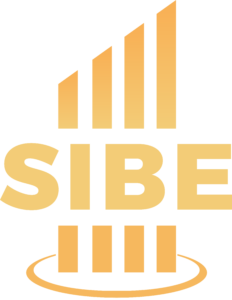One good reason to have a business plan is that it helps with your internal business planning. Your overall business plan may help with other aspects of your business, like pitching your ideas to investors, but the section dedicated to your internal operations becomes your business management tool. A sacred tool to help run your business efficiently.
An internal business plan is an extension of your overall business plan. It is usually an annual plan that is further divided into quarterly plans to help existing businesses with their operations and goals. Since it is a process, we at Global-SIBE Consult prefer to call it “internal business planning”. It is a strategic process that you must undertake to set goals, allocate resources, and develop action plans to achieve your business goals.
And in this process, you will have to pay careful consideration to a comprehensive analysis of your business’s past and current performance, identify its strengths and weaknesses, and find strategies to capitalize on opportunities and mitigate risks.
Internal business planning plays a critical role in helping your business achieve success and ensure long-term sustainability. In this article, we discuss all you need to know about internal business plans and the process.
Scope of Internal Business Planning
Internal business planning consists of all the activities and processes involved in setting business goals, conducting analyses, developing strategies, allocating resources, and monitoring progress. When you put all of these plans together, the document is called an internal business plan. It becomes a document that helps keep your team aligned with your business goals and directs them on the actions to take to achieve those goals.
Internal business planning is an iterative and dynamic process that aligns your business’s day-to-day activities with its strategic objectives, promotes efficient resource allocation, and facilitates decision-making in all aspects of your business.
We advise businesses to do this at the end of every quarter to aid in the smooth operation of the business.
Comprehensive Business Analysis: What to Do Before Writing An Internal Business Plan
Since you can’t just plan without knowing how your business performed in previous years or quarters, it is advisable to first perform a comprehensive analysis of your business. Knowing how you performed in the past years will help you better understand whether your business is making progress or lacking in a particular department.
Variance Analysis
Conducting a variance analysis helps you identify deviations from planned targets and enables you to understand the reasons behind the variances. Did you follow your plan exactly, or did you veer off course? What was the course of that?
By analyzing discrepancies between actual and expected performance, you can identify areas for improvement and make informed decisions about your internal business plan.

Comparative Analysis
Comparing your past performance with your current performance can provide valuable insights. It helps to have a benchmark for your analysis so you will be able to tell if you are making progress, and that is why you can’t just plan without making these analyses first.
For example, let’s say your business made a $65,000 profit out of $100,000 in revenue in the just-ended quarter. $65,000, as a standalone, doesn’t tell much. It may seem like a good figure, but what if your profit for the previous quarter was $40,000 out of $50,000 in revenue?
That would mean your expenses doubled but you couldn’t double your profits, and that should tell you to check or cut back on your expenses or find better strategies to make more profits if you’re spending that much.
Comparative analysis helps identify areas where your business lags or excels, giving you a chance to improve and draw up a better plan.
Key Components of an Internal Business Plan
After making your analysis, you can proceed to plan for your next quarter or annual year. Let’s see what your internal business plan should contain.
Your Business Goals and Objectives
Clear and measurable goals are essential for effective internal business planning. You will need to define the short-term and long-term goals of your business while setting clear objectives to achieve them. Ask yourself whether the actions in your plan align with your business vision and mission.
For instance, if you seek to become a global brand in the long term, then your objectives must align with this long-term. And every action you take should lead your business a step closer to this goal.
SWOT Analysis
A SWOT analysis evaluates your business’s strengths, weaknesses, opportunities, and threats. In a competitive business landscape, you would want to do everything to set your business apart from the competition, and that is why a SWOT analysis can be helpful. With a SWOT analysis, you can develop better strategies and action plans.
It helps identify internal capabilities, areas for improvement, potential market opportunities, and external risks.
Strategies and Action Plans
Based on the insights gained from the SWOT analysis, you can develop strategies to leverage your strengths, address your weaknesses, capitalize on opportunities, and mitigate threats. Action plans outline specific steps and initiatives to implement the strategies effectively.
If you know the areas you are strong at, you will probably channel more resources there to help increase your revenue. And if you know the areas where you are weak, you will find better strategies to help you improve and perform better.
Budgeting/ Forecasting
What are your expected expenses? How much revenue do you expect to generate over the course of the plan, and where will it come from? This will be a detailed breakdown of your expenses and where every dollar will come from.
With proper budgeting, your business can stay cost-efficient since you will be keeping all your expenses in check.
Resource Allocation
Internal business planning involves the allocation of your business’s resources, such as finances, human capital, and technology, to implement strategies and achieve defined goals.
Internal business planning involves the allocation of your business’s resources, such as finances, human capital, and technology, to implement strategies and achieve defined goals.
Consider your business’s capabilities and constraints, and allocate resources according to prioritized initiatives.
Functional Plans
After putting together your overall internal business plan, each department has to use it as a reference for their functional plan. Functional plans are detailed breakdowns of every department’s role in achieving the set targets in the overall plan.
Functional plans are broken down into actions that will be taken every week by each department. It becomes more like a calendar of actions toward the target.
For instance, if your overall internal business plan targets to increase production by a certain unit, the functional plan of the production team will have to state how they intend to scale. Can they do it themselves or do they need to bring new workers on board? How many? And when do they need to be hired?
If they will need to hire, then this will also need to feature in the functional plan of the HR. They will need to state it clearly and put actions in place to hire the number of workers needed.
Monitoring and Evaluating Progress
Regular monitoring and evaluation are vital to assessing progress toward the defined goals. Are you meeting your set milestones? Key performance indicators (KPIs) and milestones are established to track performance and ensure that your business stays on track. Monitoring and evaluation will enable timely adjustments to strategies and action plans.
The Importance of Internal Business Planning
What does this process offer your business? Let’s find out.
Enhanced Decision-Making Process
Internal business planning provides a structured framework for making informed decisions. The process ensures your decisions are supported by data and analysis, involve important stakeholders, and are in line with your company’s strategic objectives. Effective decision-making leads to better outcomes and a successful business.
Aligning Your Business Activities with Strategic Goals
Internal business planning ensures that all activities and initiatives within the business are aligned with its strategic goals. It provides a roadmap that guides employees and departments in their day-to-day operations. Your team understands your vision better and works in synergy toward achieving it.
Effective Resource Allocation
You need to allocate your resources wisely, especially if they are limited. And Internal business planning helps identify resource requirements and allocate them to the most critical initiatives. This promotes efficiency and prevents resource waste.
Improved Operational Efficiency
Through internal business planning, you can streamline your operational processes, identify bottlenecks, and implement improvements. This leads to increased efficiency, reduced costs, and improved overall performance.
Easily Adapting to Changes
Internal business planning equips your team with the agility to adapt to dynamic market conditions and evolving customer needs. You can anticipate potential challenges, identify emerging trends, and adjust your strategies accordingly, ensuring you stay relevant in the market.
Benefits of Internal Business Planning
Good internal business planning can help your business in many ways. Here are a few of the benefits of indulging your business in the possess.
Improved Financial Performance
Effective internal business planning helps you manage your cash flow. When you are doing a lot with money in your business, it needs proper management. Are clients paying on time? Are there too many expenses? When there is a problem that is constipating cash flow, you can easily identify it, fix it, and improve your financial performance.
Set Priorities
Internal business planning helps you identify and prioritize key initiatives. By setting clear priorities, your business can allocate resources and efforts accordingly, ensuring that the most critical objectives are addressed first.
Strategic Alignment
Internal business planning ensures that your business’s day-to-day activities and initiatives are aligned with its overall strategy. This alignment fosters a cohesive and coordinated approach and promotes collaboration across departments and teams.
Increased Accountability and Transparency
Through an internal business plan, your business establishes clear responsibilities, metrics, and timelines. This enhances accountability, as individuals and teams are aware of their roles and performance expectations. Additionally, internal business planning promotes transparency by providing visibility into the business goals, progress, and decision-making processes.
Better Communication and Collaboration
Internal business planning facilitates effective communication and collaboration across all levels of the organization. It promotes the sharing of information, alignment of efforts, and coordination of activities, fostering a culture of teamwork and synergy.
Best Practices for Internal Business Planning
What are some best practices to consider when planning for your next quarter or year?
Involve Key Stakeholders in the Planning Process
Should you sit in isolation and plan alone? Absolutely not. John from sales probably has a fantastic idea on how you can increase sales this quarter. So why not involve key stakeholders to help you plan?

Set Realistic and Measurable Goals
Goals should be challenging yet attainable, with clear metrics to track progress. Setting specific, measurable, achievable, relevant, and time-bound (SMART) goals provides clarity and focus.
Regularly Review and Update the Plan
Internal business planning is not a one-time event. It’s a process that needs to be done at least every quarter. It is an iterative process that is regularly reviewed and updated to reflect changing internal and external conditions that affect your business.
Utilize Technology and Data-Driven Insights
Leveraging technology tools and data analytics enhances the effectiveness of internal business planning. Advanced analytics and data-driven insights will provide you with valuable information and allow you to monitor progress.
Ensure Alignment Between Different Departments or Teams
Your team works together to achieve a common goal, irrespective of the department. Ensure effective communication channels and foster a culture of collaboration, making sure they work together to achieve common goals.





